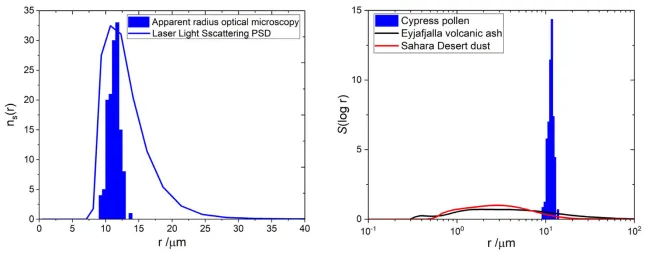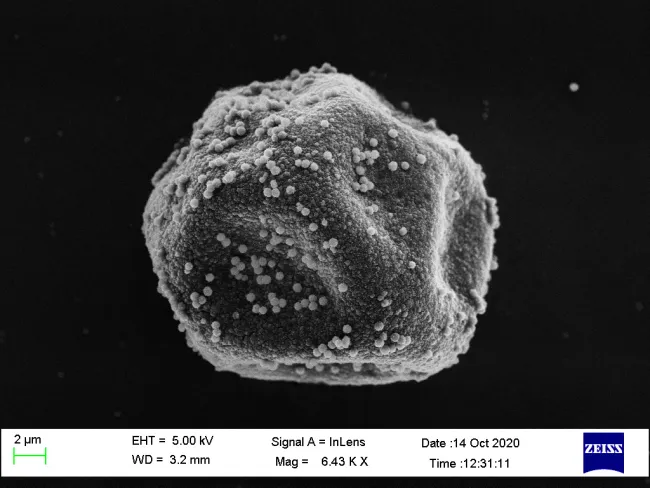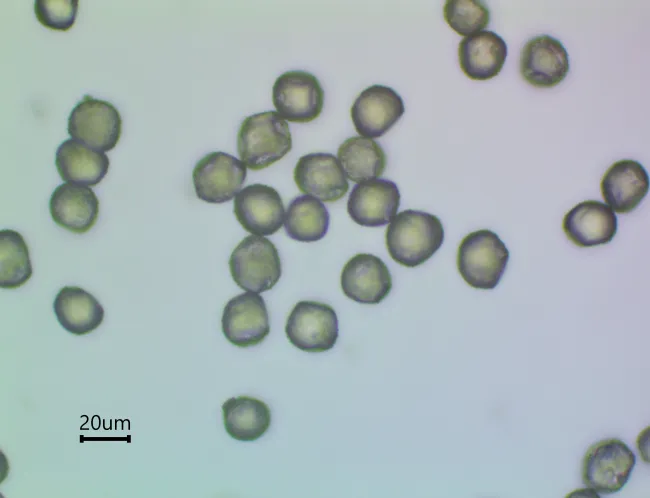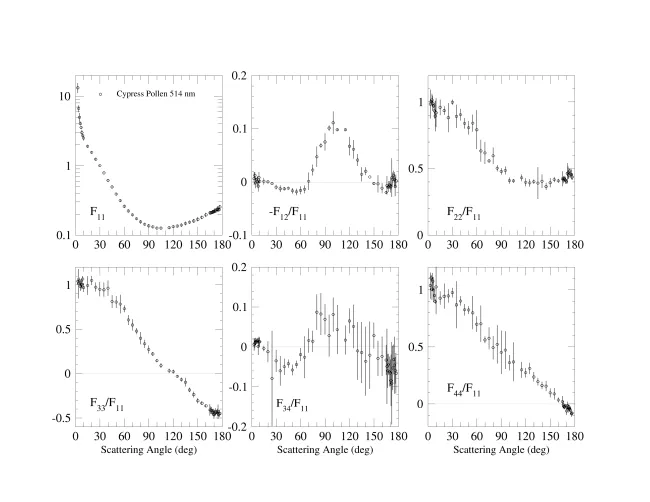
Pollen, Cypress
Practical significance
Cypress pollen content in the atmosphere is a valuable indicator for alergy-affected people.
Origin
Collected at Federico García Lorca Park (Granada)
Color
White
Particle size Fraunhofer: reff (μm)
11.4
Particle size Fraunhofer: veff
0.005
Size distribution plot:

SEM/TEM images:

All SEM/TEM images (zip file)
Images:

Scattering matrix (1) wavelength in nm
514.00 nm
Scattering matrix (1) table
Scattering matrix (1) plot:

Synthetic scattering matrix (1) wavelength in nm
514.00 nm
Synthetic scattering matrix (1) table M
Refractive index
Estimated to be in the range [1.3-1.54] + i0
Angle range (deg)
[3,177]
Reference/s